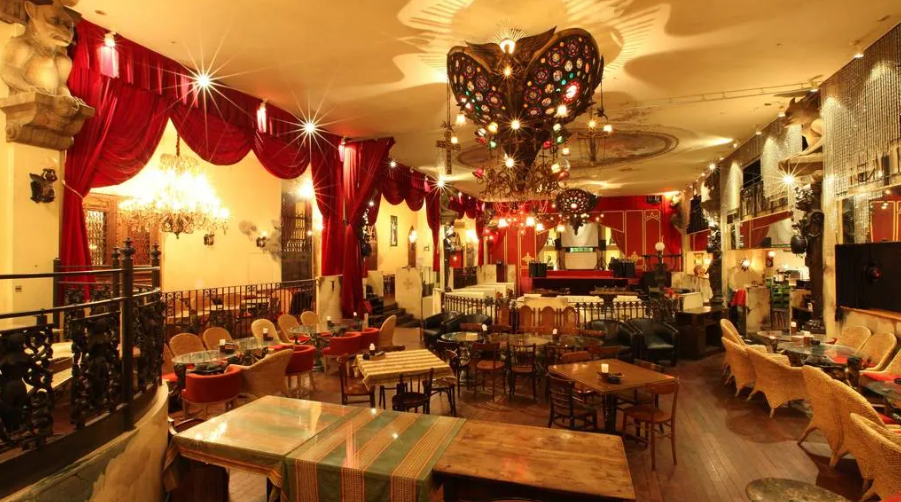By Carmen Chang,
In today’s consumer society, there is an interrelation between marketing and religion, as both have mutually influenced each other. From the 1980s, marketing could be considered a “new religion” that adopted modern marketing strategies. But are the relationships between marketing and religion quite recent? Both have very similar goals, which will be addressed later. We can pose the following questions as a problem: has religion influenced marketing and vice versa? What is the link between marketing and religion? Is religious marketing inherent to consumer society?
If we draw a parallel between religion and marketing, the objectives are very similar in both cases. In the case of Christianity and other religions, their goal is to spread faith as a value proposition and increase the number of believers. The result would be the acceptance or refusal to adopt a proposed religion. The same goes for marketing, where the goal is to increase the sales of its products as a value proposition and increase the number of customers. Similarly, people will accept or refuse to buy a proposed product.
Comparing marketing and religion further, their situation is very similar, as both seek to satisfy a latent need in society but do not create it. In the case of religion, this need may be spiritual, such as the desire to have a mystical guide, a privileged relationship with a deity or God. If a religion properly addresses this need, it will achieve its goal: gaining more followers.
For better understanding, typologies have been classified into two parts. On one hand, religious marketing comprises the actions taken by a religious organization to promote individuals’ participation in believing in each confession. Essentially, religious marketing aims to “retain and build loyalty” among believers.
Two examples are considered: Catholic marketing and spiritual marketing. In the first case, the most important figure of Catholicism, the Pope, has also modernized by adopting marketing strategies, such as using social networks to attract more followers, to get closer to the faithful, and to involve young people who might not attend his meetings, but will read his tweet.
In the second case, one of the most emblematic figures of spirituality is Dalai Lama, who, through spreading his ideology via social networks, selling his books, and conducting spiritual coaching sessions, has built a positive impact on his image.
On the other hand, in the second typology, there are two categories: 2a) religion as a marketing tool for a religious organization and 2b) religion as a marketing tool for a business. In the first case, the Catholic Church meets the needs of its followers: believing, being forgiven, getting married, etc. It also sells various products and services such as candles, holy images, ceremonies like baptisms or weddings. Examples include sweets prepared by nuns in convents; religious souvenirs sold in churches and cathedrals, such as at the Sacré-Coeur in Paris, France. This category also includes selling products for religious and spiritual rituals such as candles, incense, holy images, etc.
In the second category, many companies seek to attract their customers’ attention provocatively to sell various products and services such as dolls, perfumes, detergents, etc., using religious representations and symbolism, referring to biblical scenes, religious figures — like God, the Virgin Mary, Jesus, or Moses — among others. Often, this type of marketing and advertising can generate much criticism and controversy from religious authorities and communities. Numerous examples exist, such as the Christon Café, a bar in Tokyo, Japan, whose concept, furniture, servers’ clothing, and menu are inspired by the Western church. Islam is also a widely recognized culture and religion globally where marketing draws on its principles to sell different products like dolls that follow Islamic doctrine regarding clothing.

In this infographic of world religions, among the three most important and widespread religions on the planet, Christianity, Islam, and Hinduism can be mentioned; therefore, this study will focus on these three cases.

Religious and spiritual tourism attracts countless customers worldwide thanks to globalization, and promotes economic growth for businesses and organizations partnering with travel agencies and churches. It’s not just a trip to a place of worship but a cultural experience, communion, and exchange with local populations. Examples of religious tourism include annual pilgrimages to Mecca, the Camino de Santiago, and visits to the Vatican and the Sistine Chapel.
Regarding spiritual tourism, India is a popular destination as it is considered a land of spirituality where interested individuals can meet a spiritual master or undertake a yatra, a pilgrimage to a holy city. Moreover, the press also uses religion as a marketing strategy: for example, The Economist used a wordplay in its cover “The Book of Jobs” referring to the Bible’s “The Book of Job“.
Furthermore, among marketing and advertising campaigns, perfume brands Lolita Lempicka and Nina Ricci draw inspiration from the biblical scene of Genesis, where they use a slogan, a woman, and a tree, associating them with the scene of Eve eating the forbidden fruit. The perfume packaging even takes the shape of an apple. Other examples include a Starbucks café within the Christian Family Church in Indiana. The clothing brand Kookaï employs religious images as a marketing strategy, representing Michelangelo’s sculpture of the Pietà. Religious references hold a significant place in advertising and marketing because they are original, creative, and influential in society.
In conclusion, marketing and religion are intrinsically linked by the same attraction mechanisms. On one hand, religion has used mechanisms like marketing from its inception to spread faith and gain more followers and retain them. On the other hand, advertisers and marketers use mechanisms similar to those of religion in their advertising campaigns to satisfy customer needs, try to attract customers, increase their consumer base, and retain them. So, did religions really invent marketing? Was marketing truly inspired by the mechanisms of religion?
References
- Publicité, religion et liberté d’expression. Centro Libre expression. Available here
- Christon café et Bar de Catch. Yoroshiku’s blog. Available here
- De la “religion marketing” vers le marketing “religieux”. Emarketing.fr, Available here
- Estudios de mercados y de opinión pública. Blogspot. Available here
- Dalai Lama, líder espiritual en Twitter e Instagram. Influencity. Available here
- Marketing religioso. Slide share. Available here
- Marketing et religion. Blospot. Available here
- Marketing to the Islamic world. Slide share. Available here
- L’Inde mise sur le tourisme spirituel. Alors que l’intolérance religieuse s’étend. Blogspot. Available here
- Steve Jobs: Prophet of a new religion. Religion News and Service. Available here
- Papa Francisco, un ejemplo de viralidad. Católicos con acción. Available here
- La religion, un produit comme les autres. Sciencepresse. Available here




